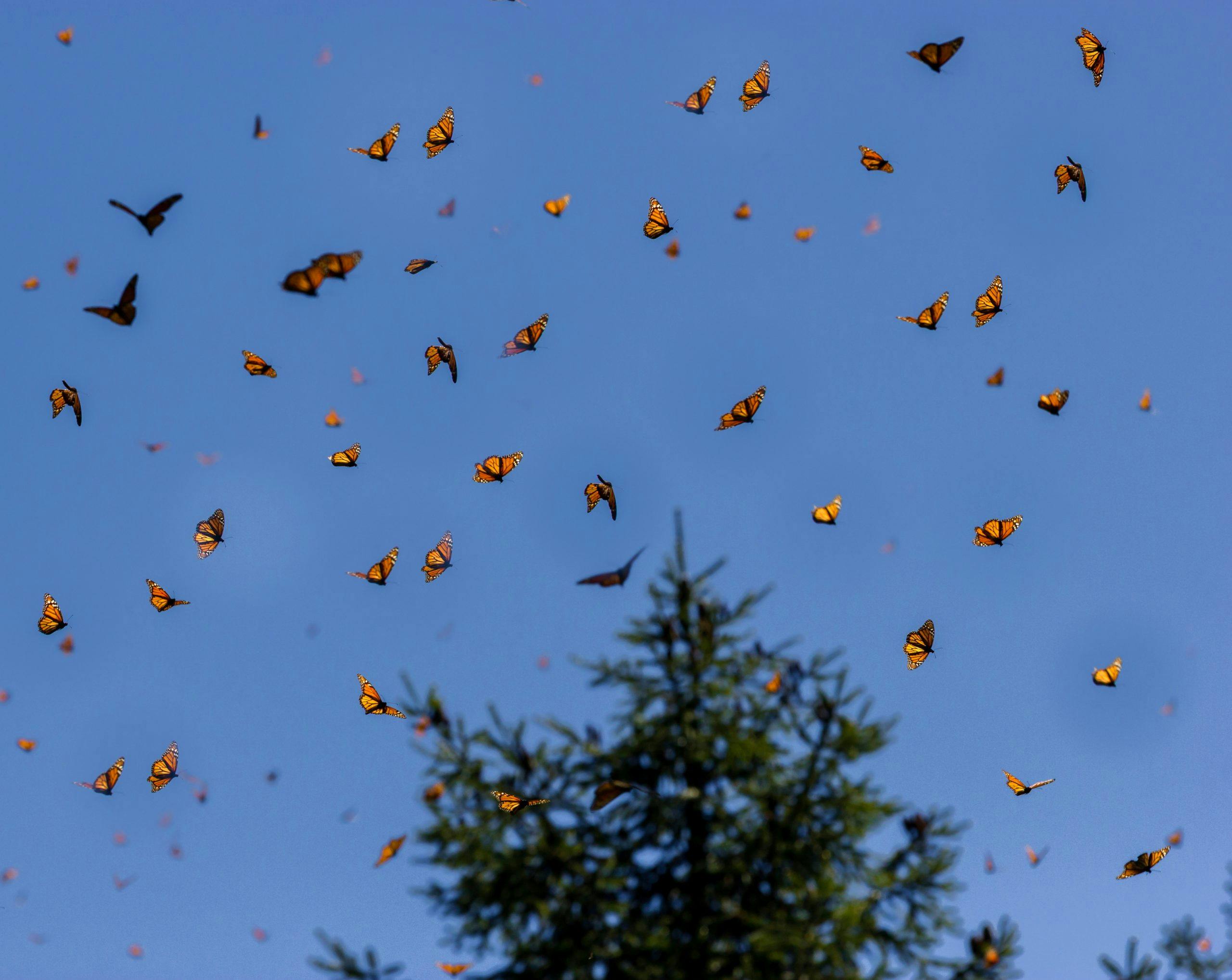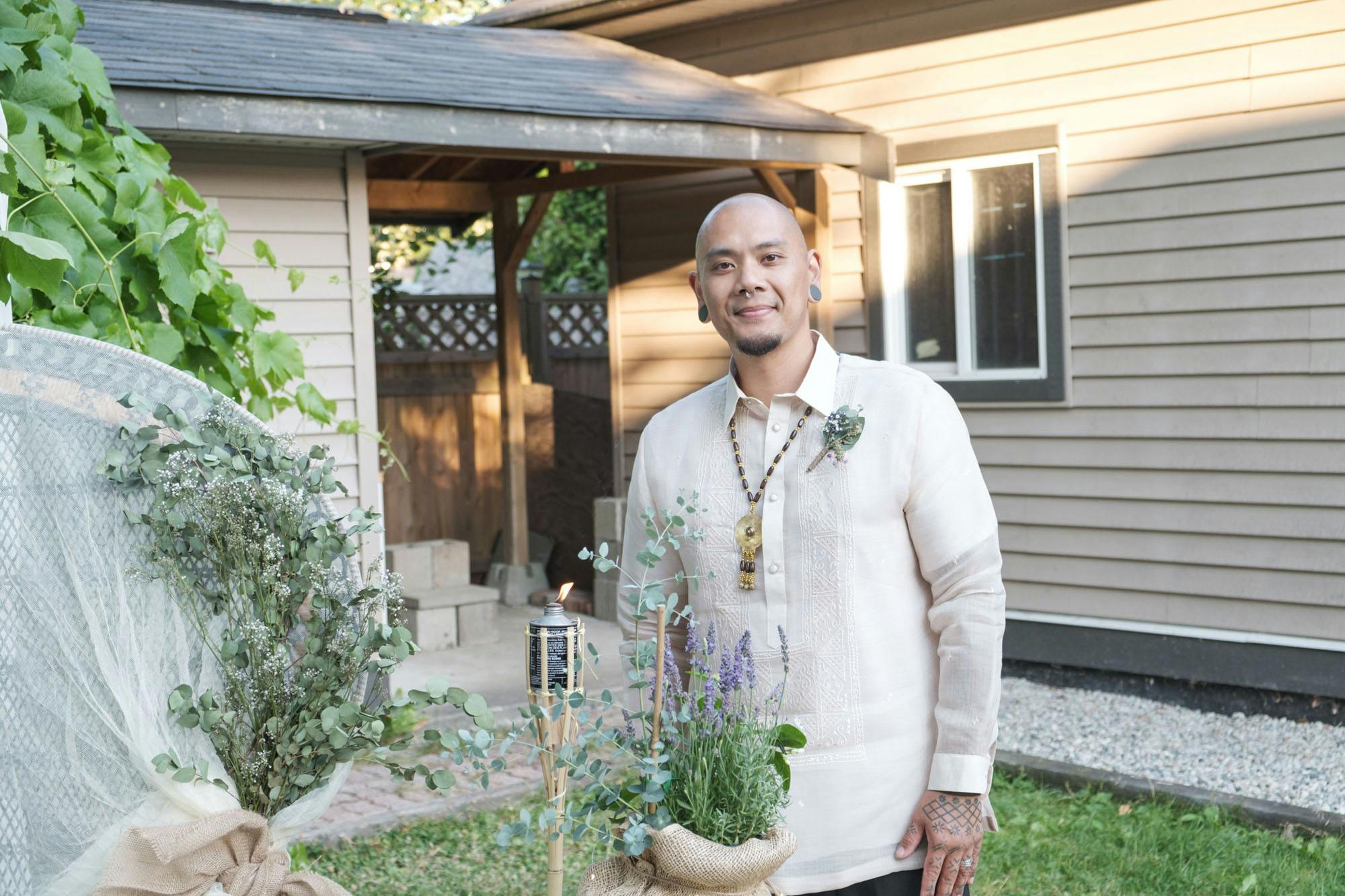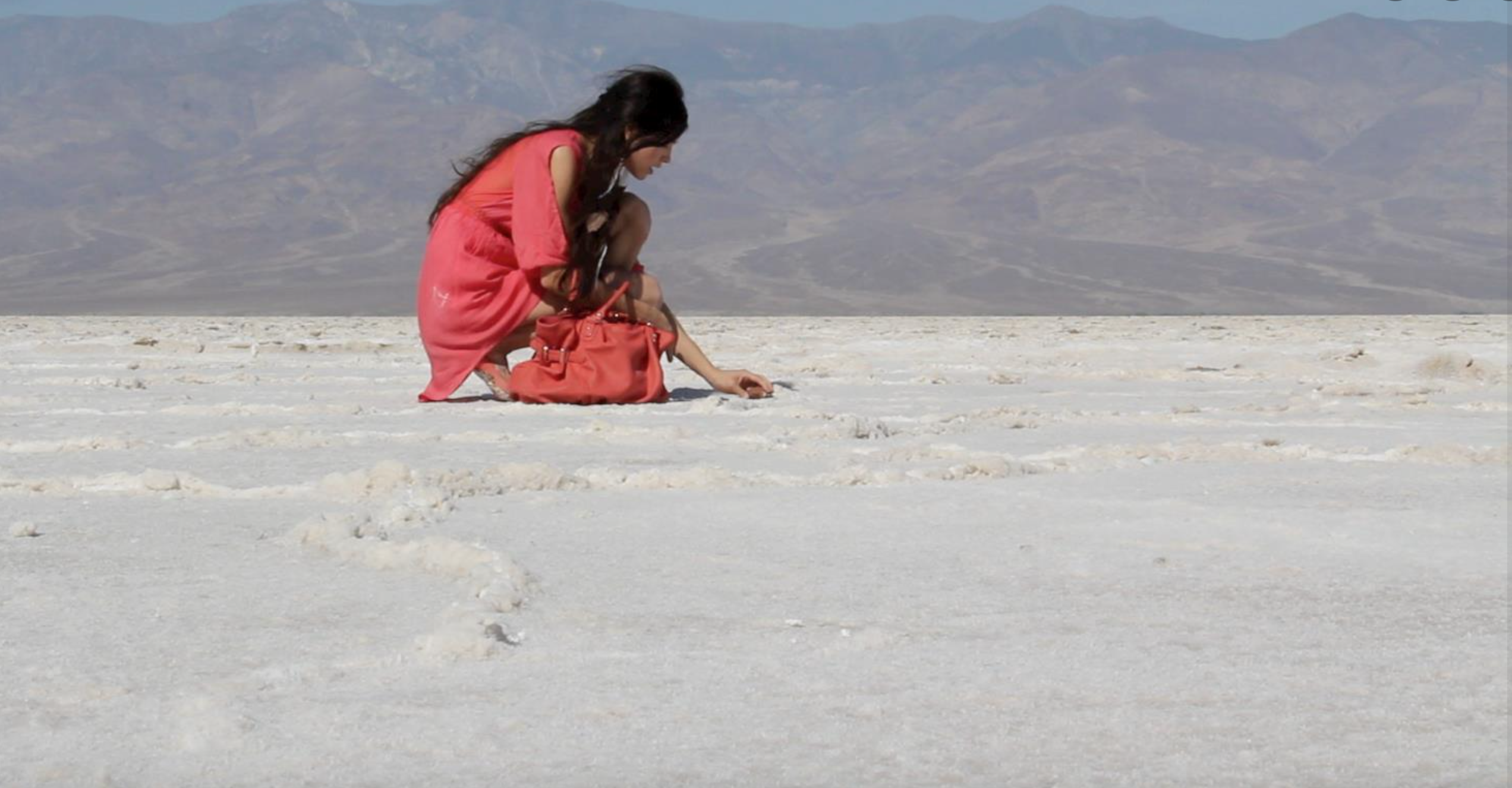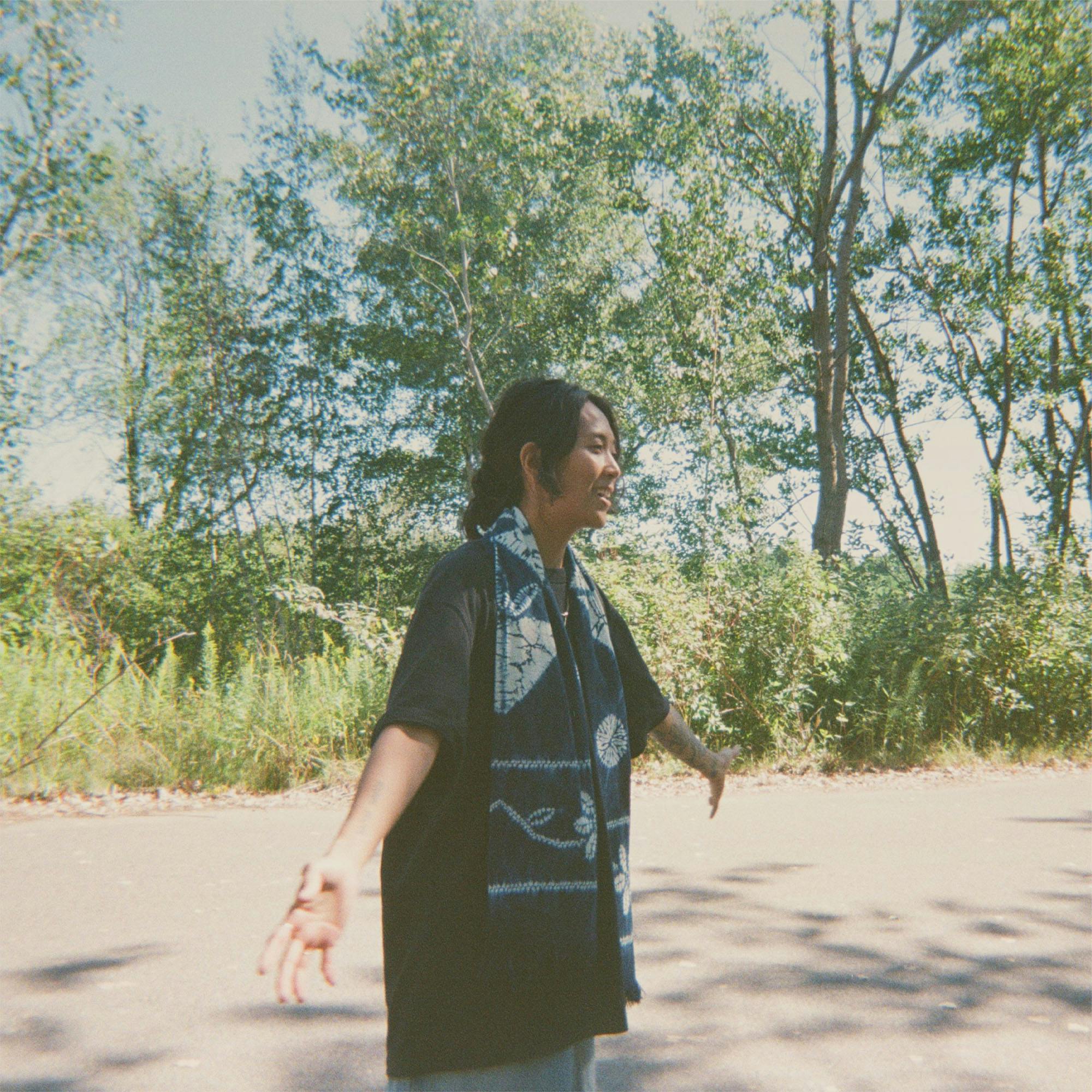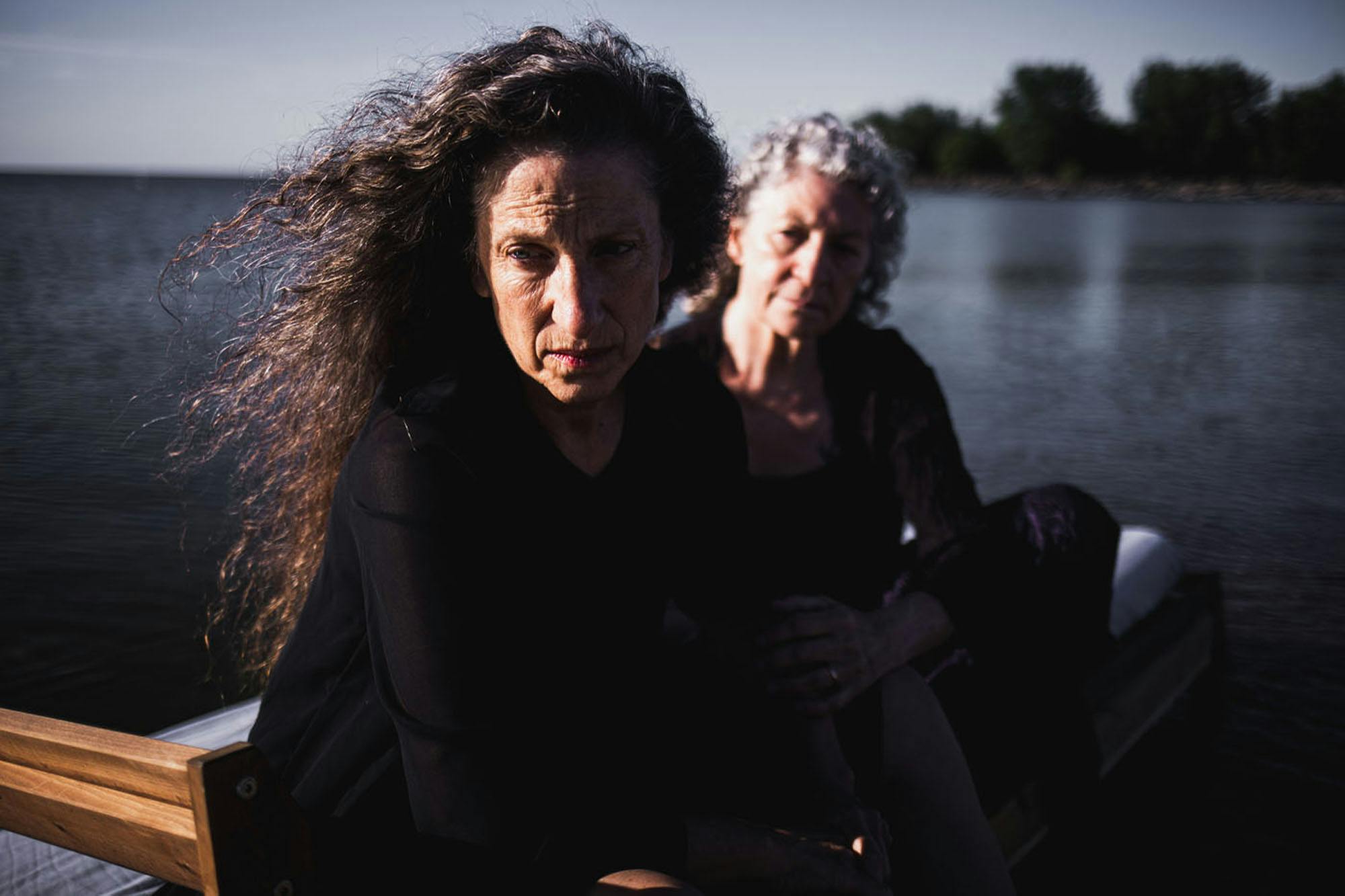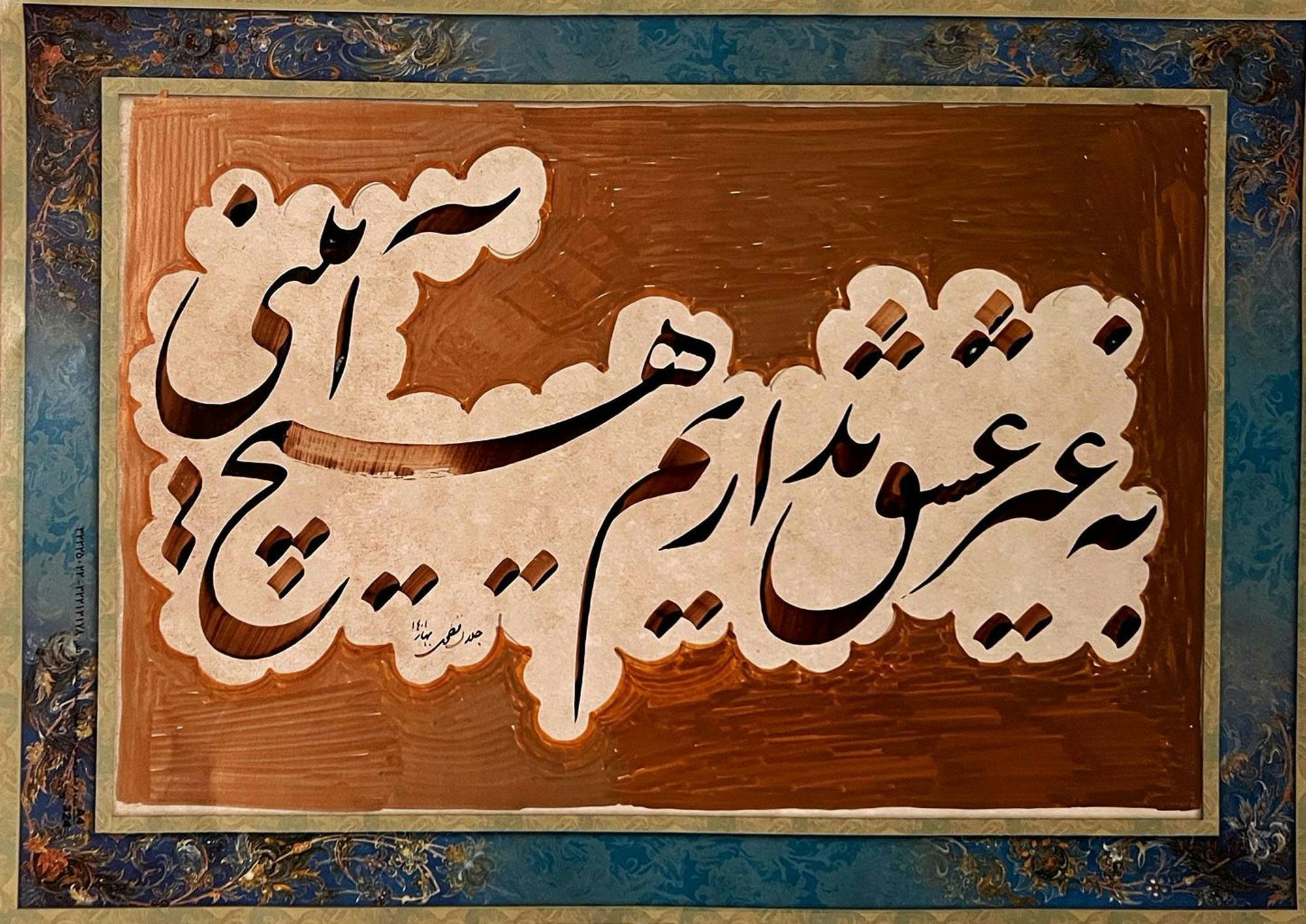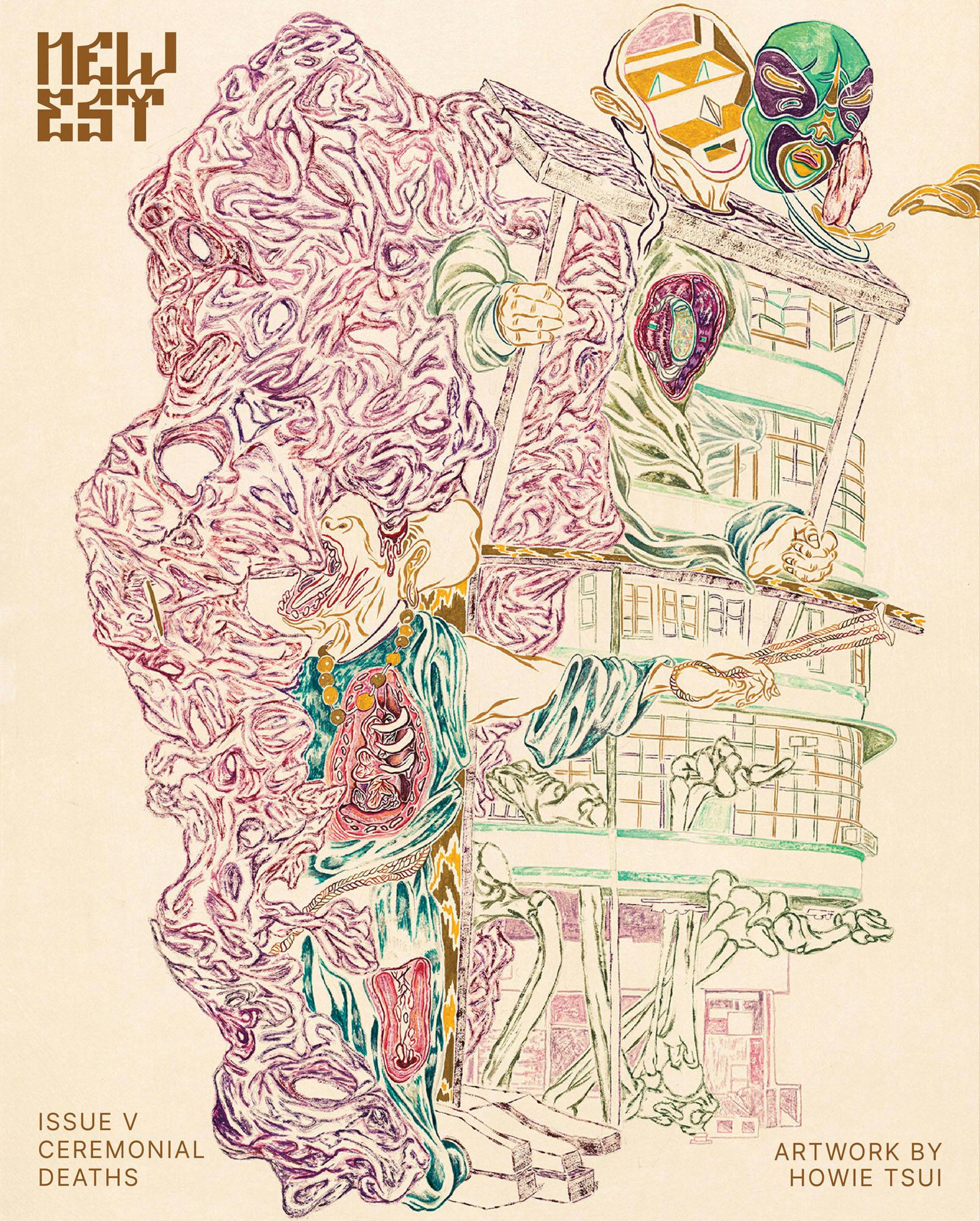The brushstrokes of a living ancestor
A conversation with artist Natalie King of pasts, presents, and futurities as Anishinaabe and Sikh ancestors rejoice
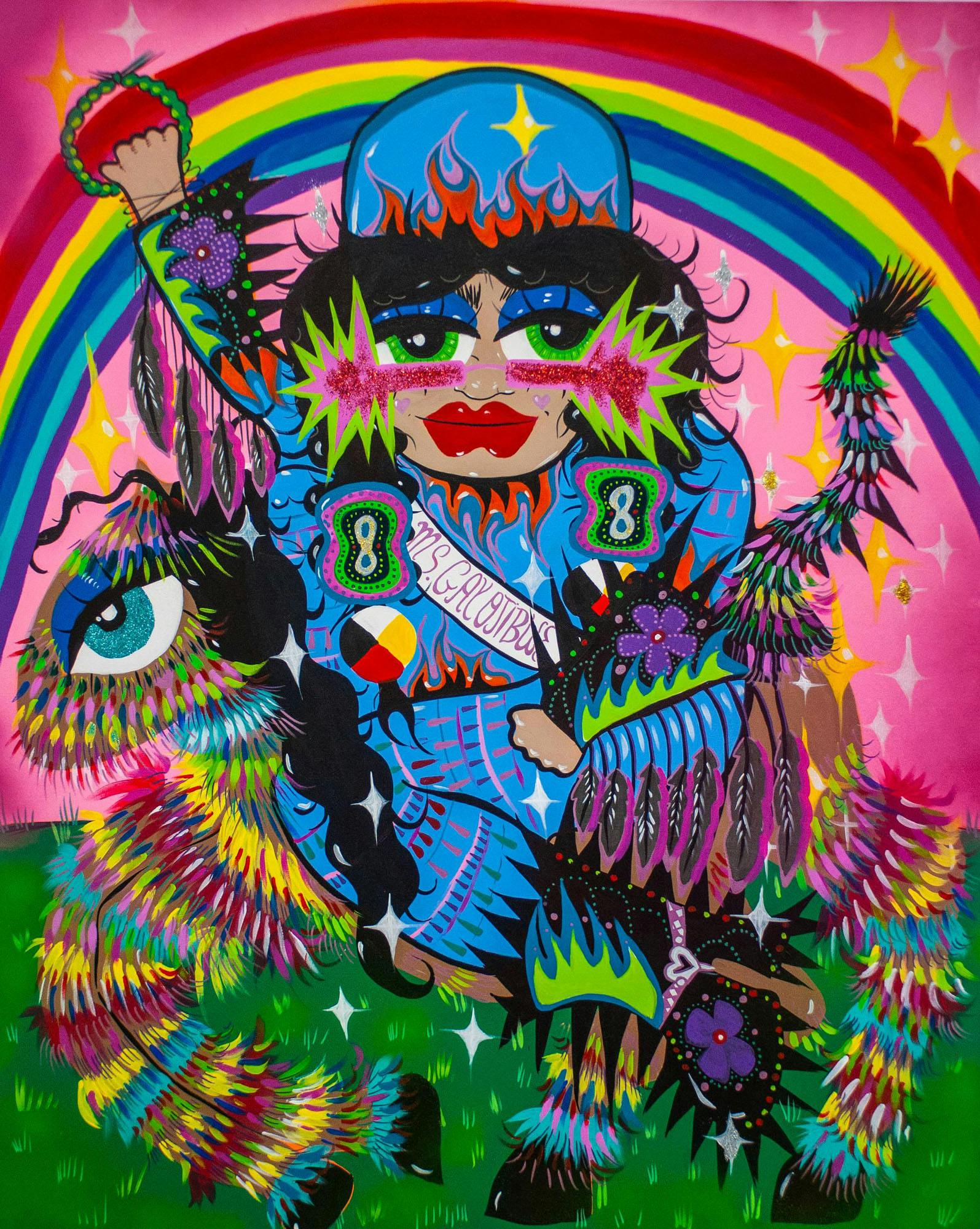
Natalie King, Red is Love, 36 x 48 inches,
Acrylic, Ink and Aerosol paint on canvas, 2022
It’s in my kismet to be a custodian to four of Natalie’s earlier works. To wake up to them, to walk past them, to contemplate them, with no knowledge of the artist or her story behind the work. There was a simple resonance. Her work, colourful and bold, made me feel powerful. You’ll read what evokes that power in our conversation below.

Natalie King, ‘Forever Kind of Kinship’,36 x 48 inches, Acrylic, Ink and Aerosol paint on canvas, 2020

Natalie King, ‘My Queerness is One with the Land and No One Can Tell Me Otherwise’, 36 x 48 inches, Acrylic, Ink and Aerosol paint on canvas, 2022
Raji
So grateful to share time with you. As you know, I’m such an admirer of your work. I live with your art in my home and it carries a huge influence on my daily life.
Natalie
It makes me feel good to know that, like, the works are having a presence in your life. And they’re continuing on somewhere. Thank you for that.
Raji
There’s been a beautiful shift occurring within me lately. I feel a desire to work closely with the new generation of artists. A passing of the baton, or change in roles, you know? This generation and its emerging, exciting energy, I seek to incubate it with love.
Natalie
That’s so wonderful to hear. That’s something that I need to be reminded of – the passing of the baton, or the continuation of mentorship. It flows through me as I’m working through these ideas of feminism, Indigeneity, belonging. It’s a lot of labour. A lot of invisible labour. I’m still learning what it means to be an artist, what it means to be an Anishinaabe, or in other words; what it means to be a human. I’m learning from other people who are mentors to me, while mentoring at the same time. So, it’s very cyclical, which is really beautiful.
Raji
I love so many things you touch on. I identify as a Sikh feminist, and in my faith, these circular ways of being are omnipresent. In the West, so much is structured on hierarchy. Could you expand on invisible labour in your work existing within the capitalist West? The emotional labour before you physically express it with a brushstroke.
Natalie
Picking up that brush comes with thousands of years of stories, thousands of years of history, of embodied lived experience that you can’t put a price tag on or even name to. This is important and vital. Sometimes ‘Canadian art’ wants a certain story or I should say myth to be told, and there is such a desire for colonial perspectives to put tropes around Indigeneity. The exoticization or the narratives surrounding Indigenous people and our trauma. These are the placements of Indigeneity that white folks are comfortable with or comfortable ideas of who they think Indigenous people are. When non-Indigenous folks witness Indigenous art, they often want to come out of the experience feeling like a better person, or feeling like they learnt something. I am constantly resisting that. I try not to show people anything really, I’m simply enacting the embodied experience of being a queer Anishinaabe woman, reflecting on those intersections. There’s no need to categorise..it’s fine to just feel, exist, it needs to just exist.
For me, it’s about when an Indigenous person walks into the gallery or sees my art, for me, they don’t need explanations. It’s just an understanding and an exchange, I am sharing something with them. In that exchange, I hope that they feel seen. I’m thinking about how my work will impact young Indigenous women, Femme and Two-Spirit people. How can I provide space? What does it mean to sort of centre our lives in pleasure and joy, in contrast to sort of narratives that have created and historically been tied to Indigenous communities?
Picking up that brush comes with thousands of years of stories, thousands of years of history, of embodied lived experience that you can't put a price tag on or even name to.
Raji
You’re living on the colonial occupation of your land, how are you learning to navigate your selfhood here? People assume that you’re Indigenous and have all the knowledges understood. That’s not the case.
Natalie
Such an interesting and incredible way of putting it. Our invisible labour doesn’t go recognized. There are settler assumptions of an inherent-ness that you have as an Indigenous person. What they are not recognizing is we’ve survived genocide and we’re currently picking up the pieces to revive our culture.
The connection with culture and language and the connection with land is really an enacting of joy. It reflects the realities of lived lives. To enact joy as a queer Indigenous person is to create a future that is bound with freedom. The idea of freedom and sovereignty go hand in hand and enact joy for me. It feels like a portal or somewhere looking into the future.
Doing the hard work of language revitalization and connecting with communities is about reconnecting and finding yourself. I get emotional seeing my cousins, and my family’s children continuing our culture and having glimmers of light spring back up. My father was shamed in school for having his hair long, so seeing one of my nephew’s growing his hair long– having these long braids–it’s just incredible to witness that in real time.
There are settler assumptions of an inherent-ness that you have as an Indigenous person. What they are not recognizing is we’ve survived genocide and we’re currently picking up the pieces to revive our culture.
Raji
These are the multiple things working within and outside of you. Reclamation of identity, revitalization of your heritage (that has gone through and continues to go through genocide), and then to embody that and churn those emotions and histories into a visual language and have it resonate with your community. Like, fuck.
This resonates with me on two levels. One, because the Sikh are not to cut our hair. While I imagine my full identity with long hair, there are colonial impacts that I navigate in how I present. Second, is because Sikh people were both exoticized and persecuted. My family fled to Canada in the 1970s and 1980s. They would have been killed in their homeland of India. And now we’re here, but we’re losing our identity. My nephew is half Sikh and half Syilx. His hair was long as a child before it was cut. He’s lost so much without his unshorn hair. It’s so emotional and heartbreaking that both identities can be easily lost in the next generation growing up in Canada.
We were looking back and we're looking forward, trying to find where we are now.
Natalie
We’re weaving in and out of colonial time and identity. We were looking back and we’re looking forward, trying to find where we are now. There’s an urgency there. An urgency to dedicating your entire life to preservation and revitalization. To learning from within the queerness. With the colonial project, we’ve been made to see ourselves as not as less than or as broken. So for me, it’s like, these are just like the beginnings of how our art reflects the desires of the future, something that I hope can continue.
I wasn’t surrounded by the breadth of my community until much later. Being queer and being Two-Spirit, we sort of go through adolescence a little later. Cherishing that, enacting that, making connections with one another and finding each other is important. It makes me emotional thinking we have to make sure the next generation has accessible ways to connect with their own communities and ancestors.
Raji
I often get people telling me I’m serious or work too much. Most of the time, I don’t give a fuck. But at moments and with some, I want to clarify by saying, “if your people, land, language is being actively erased and your children are forgetting their roots, what would you do? Would you be reclining or dedicating yourself to the fight for preservation?” It’s not not serious.
I want to go to that second thing you said, community. It’s so important to be seen and held in community. For a long time, I felt like I had to hide myself, my spirituality, and my faith. A large part of that is because I didn’t want to be exoticized. That’s no longer the case. It feels like the universe is finally opening to me because I’m opening up to myself. And I’m just now finding my people. Last night a friend gave me permission to cry, not because I was grieving. I just cried and it felt fucking amazing. I think largely it was because I was being seen for the first time, possibly, in my life. (Love to you, Dahae Song)

Don Valley, 36 x 48 inches, Acrylic, Ink and
Aerosol paint on canvas, 2022
Natalie
You’re being seen and also enacting such an inherent part of yourself and part of your ancestors. And I totally relate to what you’re saying about crying. I feel that crying is such a gift and in my culture, crying is beautiful. We’re meant to cry. In Anishinaabe, crying is release, crying is medicine. I lost my brother in 2017 to drugs and alcohol. Life is entangled with grief. Holding that, holding that close to my heart, while making work, is such an inherent part of life, death is an inherent part of life. I think about him a lot when I make art and I don’t talk about it a lot. This is the first time I’ve ever really talked about it in an interview context. But, he is a huge presence in my art. His name is Carl.
Raji
Thank you for sharing that. And I’m sorry. I lost my best friend to a fentanyl overdose in 2017. Each year, during my ceremony of his remembrance (his barsi), I think, no, not any more of our children. Again, I think about this work and the Western response marking it as workaholic. This is not work. Honouring him and honouring our ancestors is sacred work. It is the work of those that have lost, that we’ve lost, and will continue to lose if we don’t do this sacred work now. We’re living ancestors to them. You’re preserving Carl’s energy in your art. I will honour him in your paintings. We look at death as the infinite and abrupt conclusion of the human form. But we know the spirit continues on. You’re thinking about your ancestors when you’re creating art. So they live on in your work. Do you see your work as a living being?
Natalie
Thank you for sharing this, and I am sorry too. I think about Carl’s voice and what he’s taught me. I feel I am living for him in a way. I’m connecting with my culture for him. I’m enacting this, being present, and proud of who we are as a people, when I speak about my identity or culture. I’m standing shoulder to shoulder with these people who have brought me to who I am. I think about my grandfather behind me and telling me that you can do this. It’s okay to not have all the answers or be scared. But you’re going to be okay. This centres me. I hope other people also feel they can connect to that. I also think it’s important to create opportunities for others who are marginalized, Afro-Indigenous or Indigiqueer or Two-spirited who are further marginalised. We need to make more space for them. This is a responsibility that you carry as an artist.
I’m standing shoulder to shoulder with these people who have brought me to who I am. I think about my grandfather behind me and telling me that you can do this.

Natalie King, Forever Kind of Kinship,
36 x 48 inches, Acrylic,
Ink and Aersol paint on canvas, 2020
Raji
This all resonates to the best my bloodlines can allow. This land is grieving. I have a troubled relationship as a settler with this Western notion of Truth and Reconciliation. The two are bridged together and all efforts fall under this banner when they are such separate acts of love and reparation. We both practice circular thinking. We, settlers, need to seek truth actively and urgently. And reconciliation happens much after that and it has to be slow and allow for healing and dialogue and resources and love and trust. One can’t happen without the other but they can’t be done in the same time and space with each other. You cannot unearth unmarked graves from residential schools in Canada and expect Indigenous peoples to accept a Pope’s apology as a momentous closure.
Natalie
Even the language used by the settler governments to describe unmarked graves from residential schools was discovering the graves. You didn’t discover them. Those were events with specific intention. We live with that grief everyday. Those are our kin, our families. It’s a very different experience living through and waking up to those realities that have happened and continue to happen. Residential schools continue to be enacted in various ways whether through foster care or incarceration. There have been so many lies told. There have been so many ways that we have been taught to hate ourselves.
And so I don’t invest or divest much in Truth and Reconciliation now. I think about Land Back as a place to start. I think about connecting our communities together. I think about reparations. But I also think that it has to come from a place of each nation, and their own sovereignty and how they view and how they want. It’s like what you said, they want instant gratification in the West. I overheard someone say at the opening remarks of an art event: “that was a great land acknowledgement.” You’re giving yourself props for land acknowledgement? That’s where you’re at right now? That was just incredible to me.
This is something that’s going to take generations.
Raji
I agree. I agree. I so agree. White guilt overshadows the opening of windows to truth. I hope, in my lifetime, I can be in trust with different Indigenous nations, and be in servitude if it’s invited. Settlers have a lot of work to do while Indigenous revitalization, healing, and joy creating happens
I might lose you because our lights are flickering. Perhaps that our Indigenous and Sikh ancestors’ power and rejoice. There is a thunderstorm that is descending upon us here in York. And before the power cuts, I’ll just say all love, respect, solidarity to you now. And, thank you.

Natalie King, My Queerness is One with the Land
and No One Can Tell Me Otherwise,
36 x 48 inches, Acrylic, Ink and Aersol
paint on canvas, 2022
